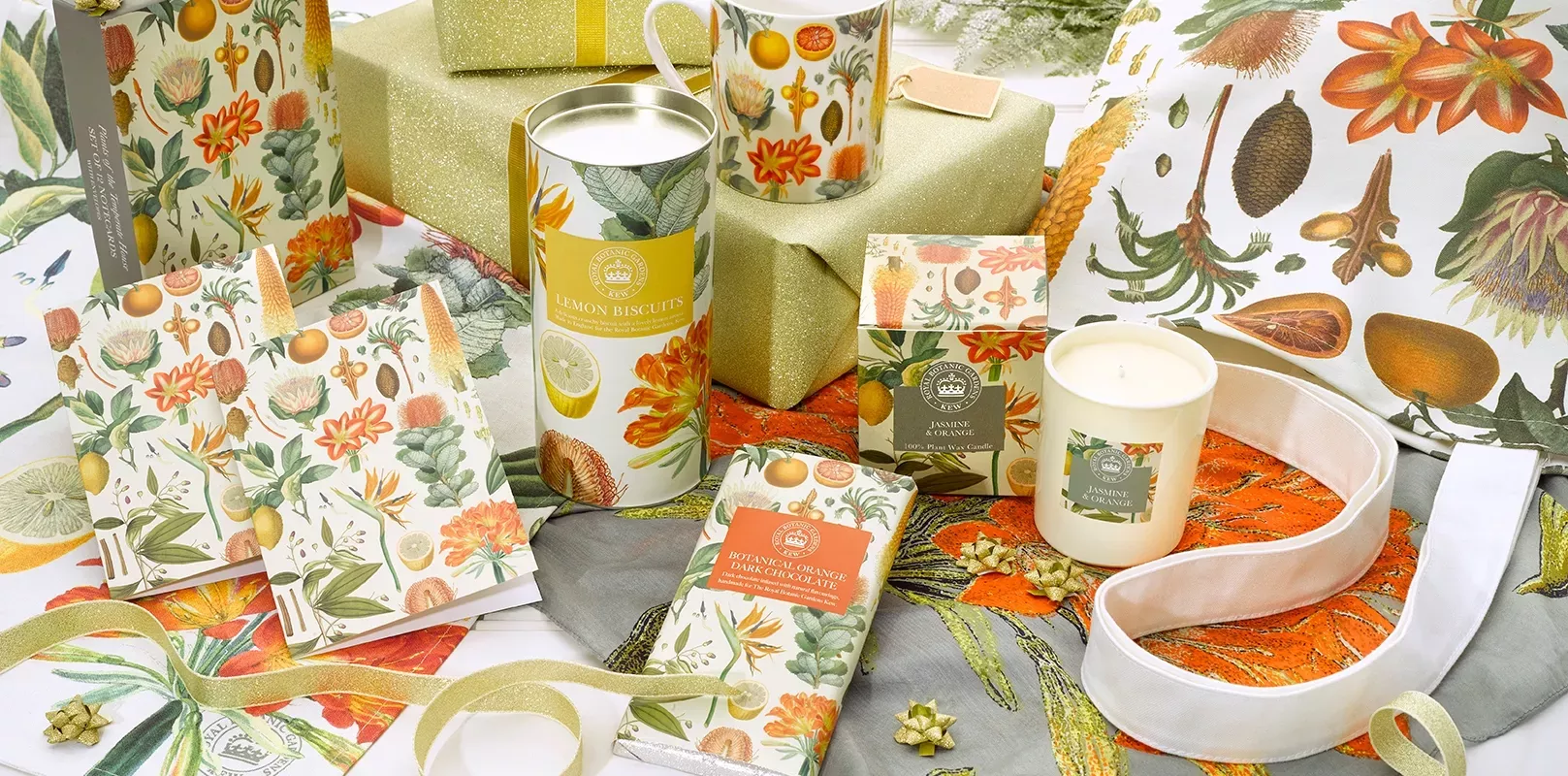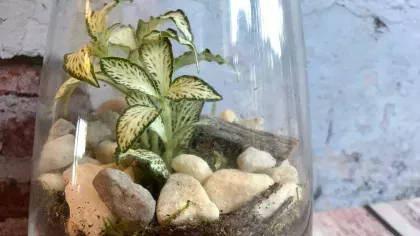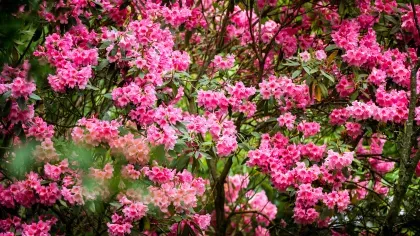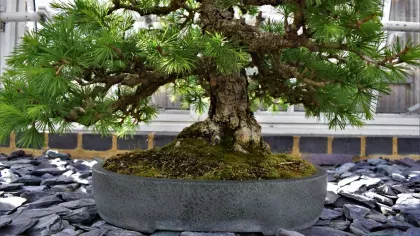10 April 2020
Recreate Kew in your garden this summer
Richard Wilford, horticultural expert in garden design talks about Kew's approach to beautiful grounds.

As we stay at home, keeping safe and watching spring unfold, it’s a good time to make plans for the summer garden.
You may have some seeds already available to you or are thinking about what you could create in the future.
With some examples from Kew, here are some basic tips to designing your summer garden
They can apply to any size garden or even a balcony; just remember to keep things in scale with your area you are planting.
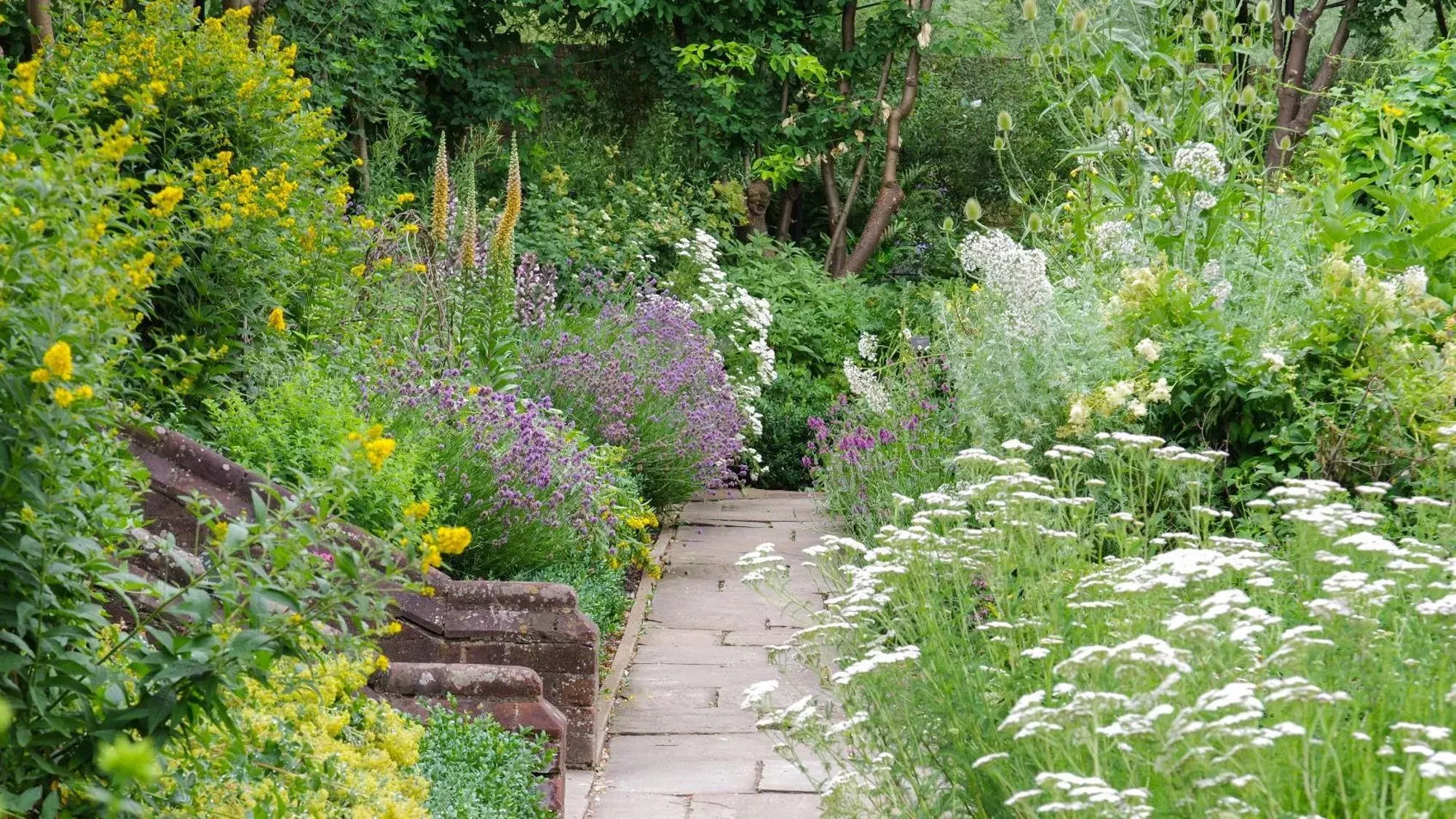
Structure your space
Tucked away behind Kew Palace is the Queen’s Garden.
You’ll notice there is a structure from the steps, sloping bank and path. The planting is in scale with this space.
Structures in a border provides the frame for your planting. They are the anchor around which herbaceous plants can swirl or spread all year round.
In this garden, there is a deliberate repetition in the various white flowers and purple lavender to hold the design together and the colours are a pleasing mix of pastel shades.
Many things can be your structure; wall or hedge, a sculpture, obelisks for climbing roses or an evergreen shrub, or for the braver, a clipped topiary like the yew pyramids along the Great Broad Walk Borders at Kew.
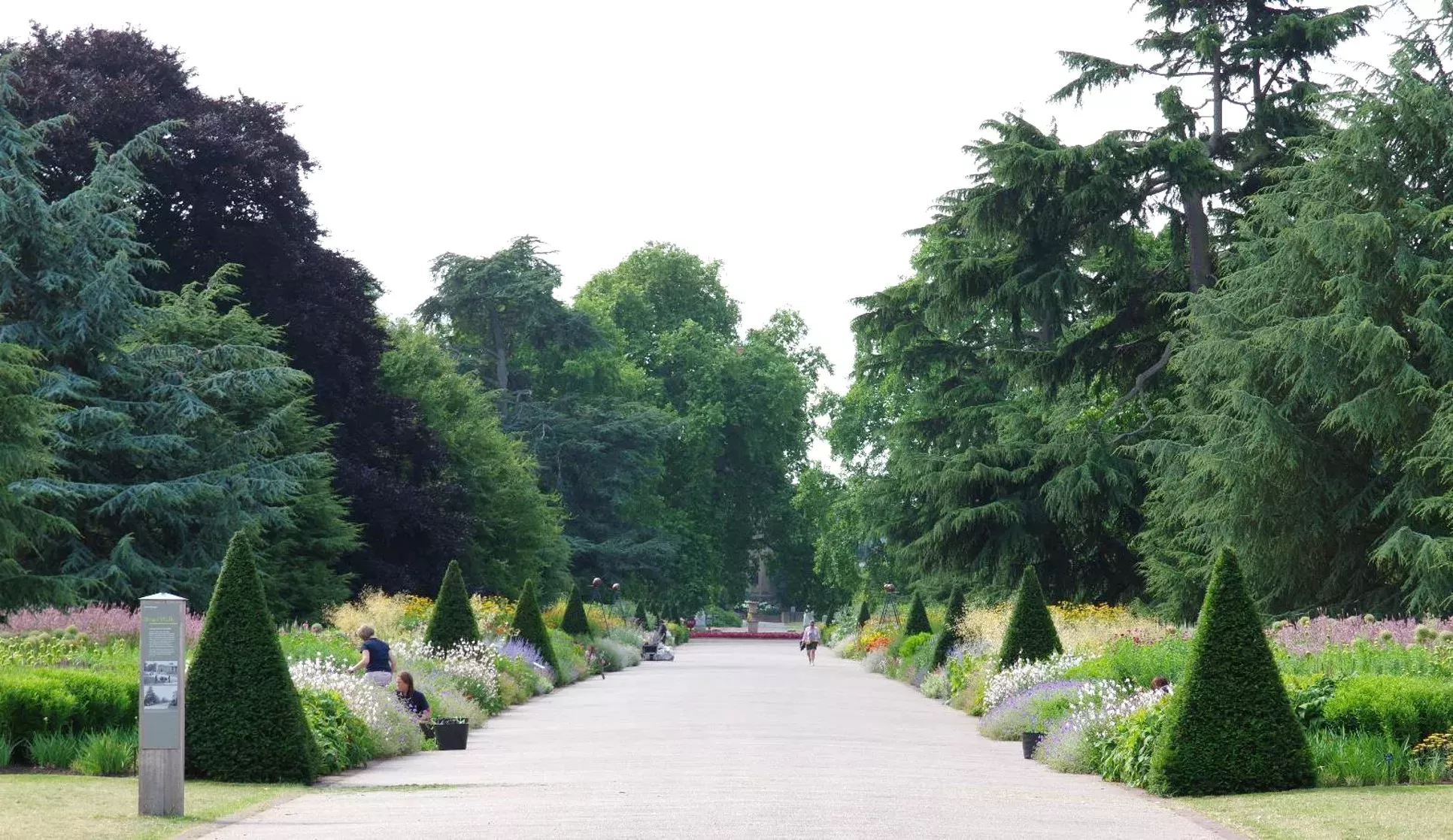
Think about scale
One reason the Great Broad Walk Borders feel so large is because the landscape is vast.
Alongside tall trees and wide-open spaces, borders need to be long and deep to make an impact.
Think about the size of a border and choose plants that fit the scale of your garden.
Along the wall of The Mansion at Wakehurst, butterfly bushes (Buddleia) provide the height, rising above pink phlox and mixed penstemons.
If you have a wall or tall hedge, plant a shrub or two that will give height to the planting or choose a few tall perennials that will bridge the gap between the shorter plants and the wall.
Tips for scale
- Hydrangeas, roses, lavatera and buddleia can give height and structure.
- Tall perennials include Veronicastrum, Joe pye weed (Eupatorium), giant inula (Inula magnifica) and purple top (Verbena bonariensis).
- In a small garden, climbers like clematis and honeysuckle (Lonicera) can cover a wall or fence, providing height without taking up much ground.
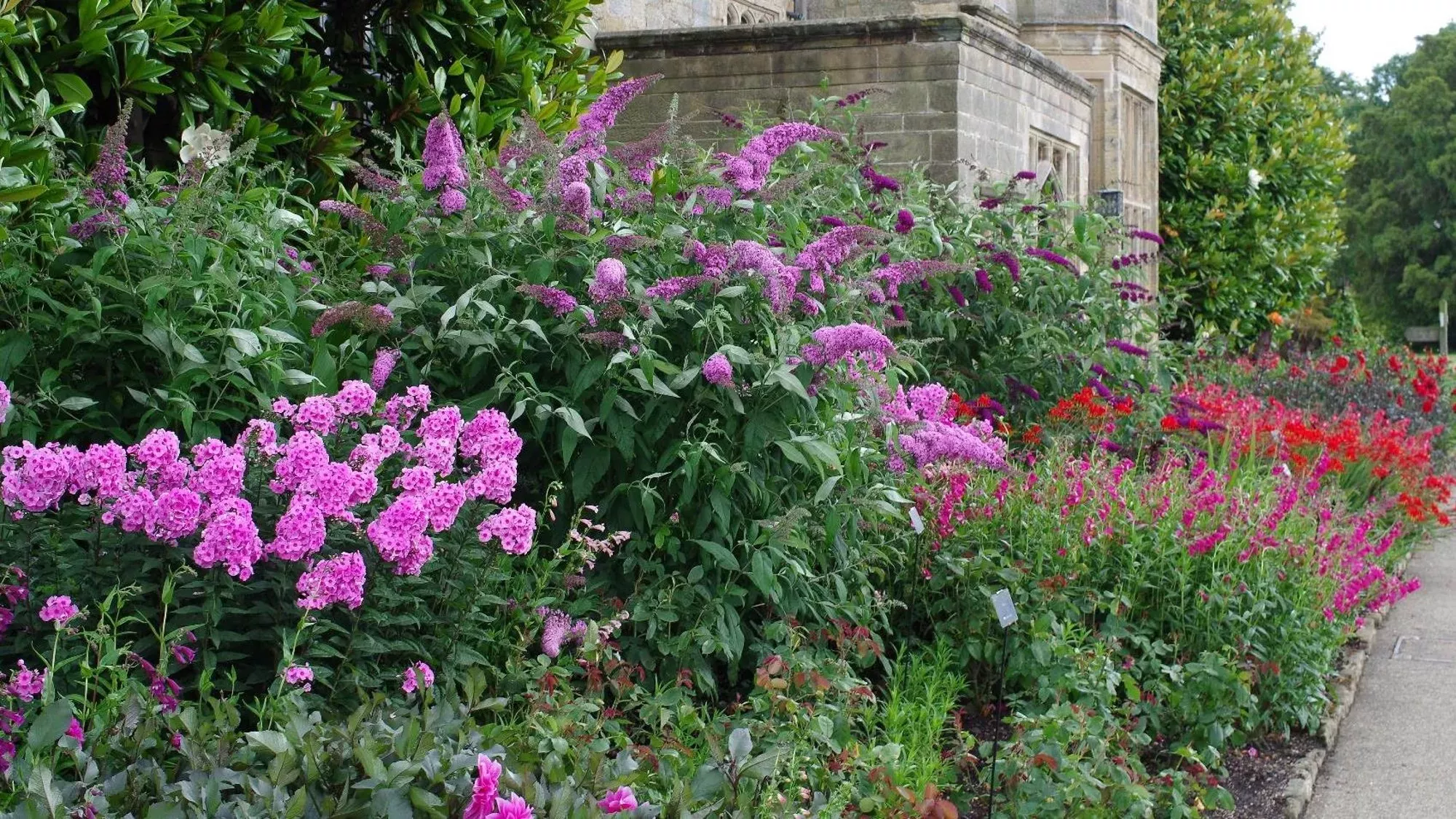
Repeat, repeat, repeat
You’ll notice some repeating patterns in our borders at Kew.
Clumps of yellow-flowering Turkish sage (Phlomis russeliana) are repeated in this border below to bring the whole planting design together as one beautiful summer feature.
Repeating patterns or colours can really make a difference.
They bring a design together, providing continuity and lead the eye around the space. Try repeating a plant throughout your border, or use different plants with a similar colour or form.
Tip:
- These repeating patterns look best when made up of groups of plants rather than individuals.
- Two or more groups of deep red penstemons, like Penstemon ‘Andenken an Friedrich Hahn’ (also known as ‘Garnet’) or the yellow Phlomis ruselliana will hold a design together and allow space for a range of other plants in between.
- On a terrace or patio, the same effect can be achieved with plants in pots. Try pelargoniums for bright splashes of colour.
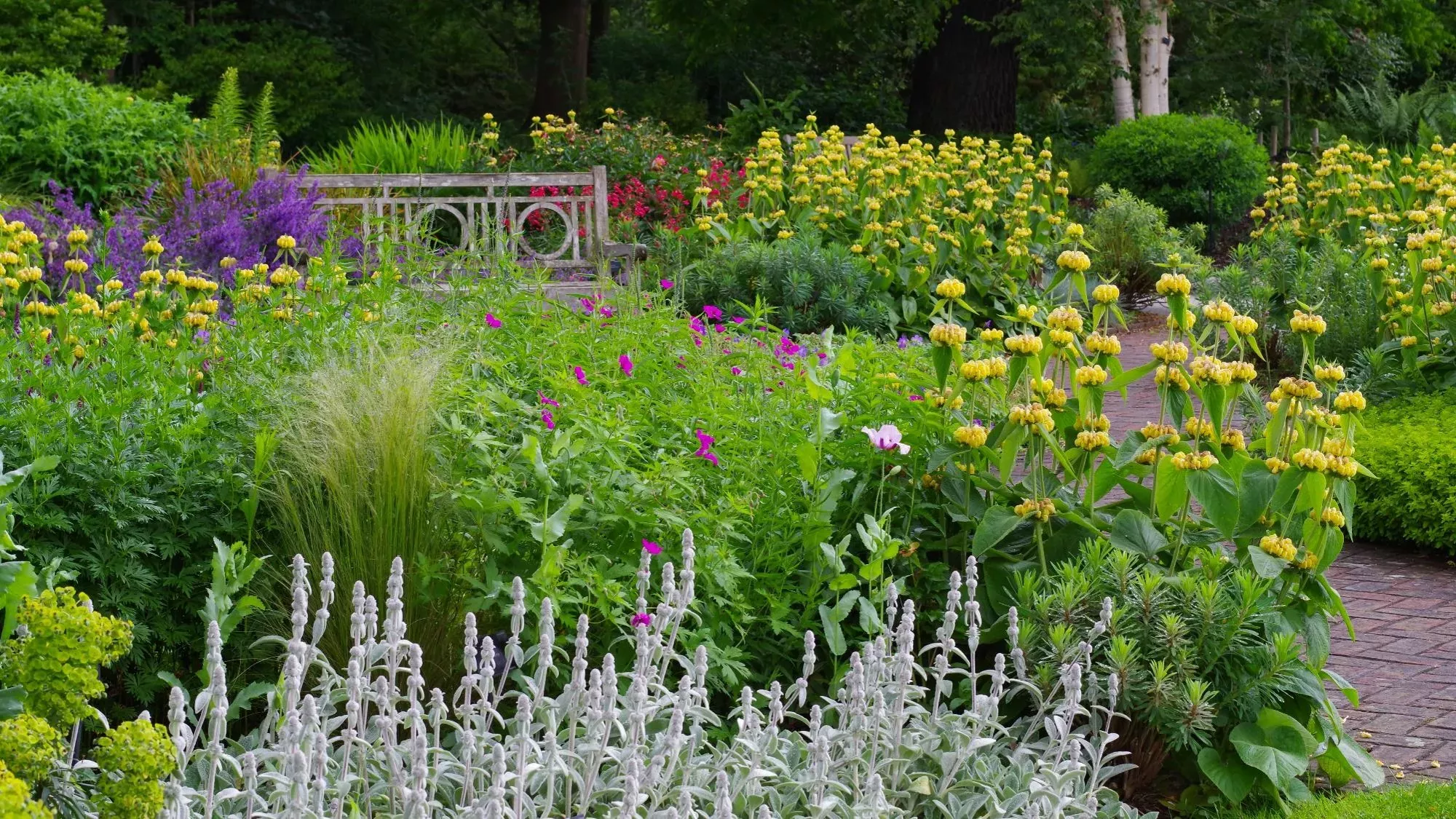
Long summers
In gardening terms, summer begins in May.
At Kew, we start with alliums and early sages like purple-blue Salvia ‘Serenade’, and finish in late September with yellow rudbeckias, purple asters, Japanese anemones and russet sneezeweeds such as Helenium ‘Moerheim Beauty’.
Late summer on the Great Broad Walk Borders, we have yellow Rudbeckia, purple cone flower (Echinacea), deep orange-red Helenium ‘Rubinzwerg’ and white milk parsley (Selinum wallichianum).
You’ll need a succession of blooms to cover that long season.
Some early summer plants like the sages Salvia ‘Mainacht’ and ‘Caradonna’ and the bellflower, Campanula lactiflora, can flower again if cut back after the first flush of blooms.
Grasses like Pennisetum and Miscanthus last well into early winter, their feathery seed heads catching the low autumn sun.
Tip:
- Time also means time of day: Make the most of the late or early sun in golden hour.
- Tall spires of foxgloves, mulleins (Verbascum) or hollyhocks can take on an ethereal quality as the sun sets behind them.
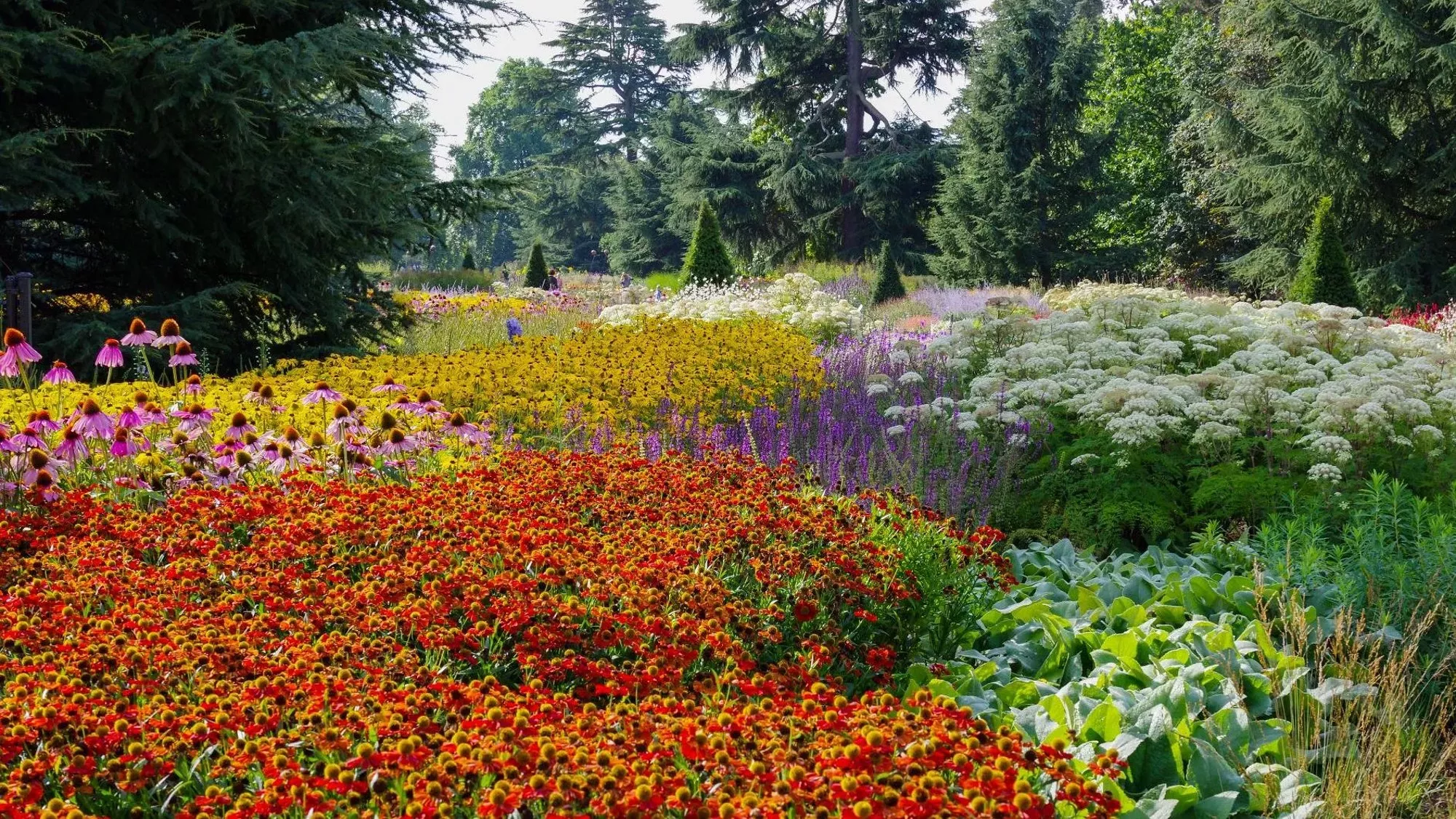
Burst of colour
Nothing says summer like a burst of colour in your garden.
Look at a colour wheel to see what complements and what might make a startling effect when put together.
Opposite colours are complementary, so orange goes with blue, yellow with purple, red with green, etc.
Complementary colours can give a softer, more pleasing effect when used together and you can introduce another colour to jolt the senses.
Magenta flowers, like those of the rose campion (Lychnis coronaria) are always good for a surprise.
In any colour scheme it is worth having some white, like Echinacea ‘White Swan’, to lift the design and give it light.

Structure, patterns, colour, scale and seasonality are the basic principles we use at Kew and are a great baseline to start your own garden.
Stepping into your private green space, if you have one, can give you a vital connection to nature so it’s worth putting some design and thought into your creation.
Above all, experiment. The great thing about gardening is that there is very little you can’t change next year.
